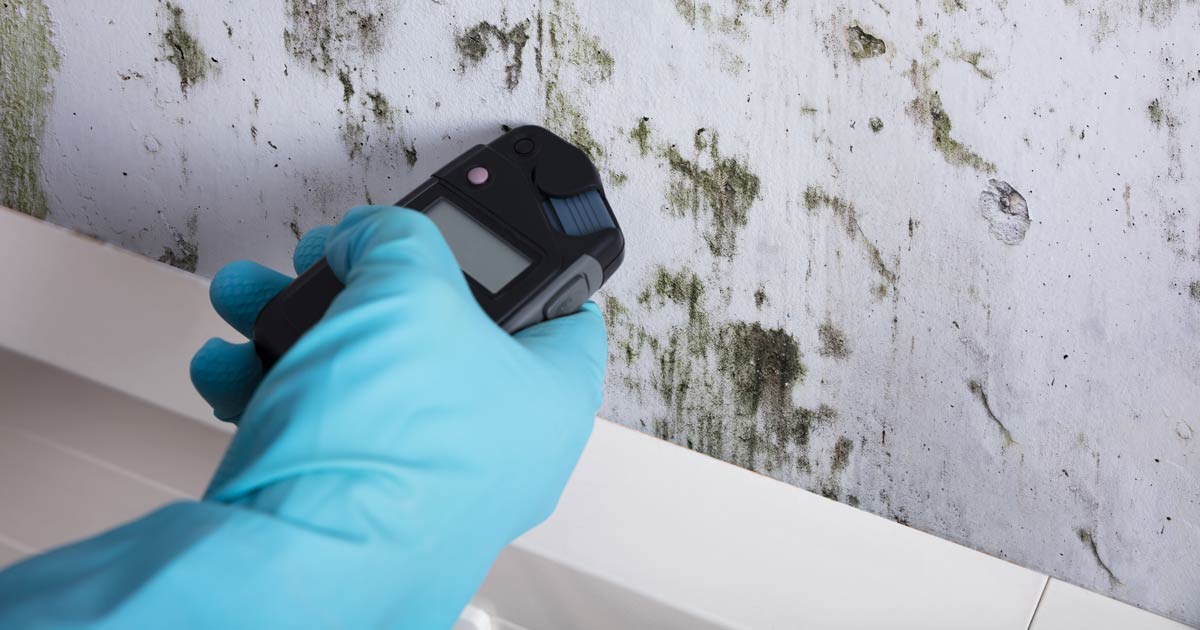Testing Air Quality After Mold Remediation
Your Ultimate Guide to Post Mold Removal Strategies
Browsing the realm of post-mold removal strategies is a thorough procedure that demands attention to detail and an extensive understanding of the intricacies included. In the after-effects of mold problem, recognizing just how to properly eliminate the mold and prevent its reoccurrence is critical for preserving a healthy interior environment. From picking the ideal cleaning and disinfecting techniques to implementing methods for lasting mold avoidance, each step in the remediation journey plays an essential function in making certain a successful end result. As we get started on this expedition of post-mold removal techniques, we will certainly uncover the key techniques and best methods that can assist you restore your space to its pre-mold problem and secure it against future mold risks.
Comprehending Post-Mold Removal Process
After finishing the mold and mildew remediation procedure, it is vital to understand the post-mold removal methods that are necessary to ensure a reliable and thorough cleanup. Once the mold and mildew has actually been eliminated, the following step includes cleansing and sanitizing the influenced areas to avoid any type of regrowth of mold and mildew.
In addition, carrying out a final assessment post-remediation is crucial to ensure that all mold has been successfully eradicated. If the inspection discloses any sticking around mold and mildew, extra removal may be required.
Effective Cleaning Up and Decontaminating Techniques

Protecting Against Future Mold Growth

Significance of Correct Air Flow
Appropriate ventilation plays a critical duty in protecting against moisture build-up, a crucial factor in mold and mildew growth within interior settings. Reliable ventilation systems aid remove excess moisture from the air, lowering the chances of mold and mildew spores discovering the wetness they require to spread out and sprout. Without sufficient air flow, interior areas can become a breeding ground for mold and mildew, resulting in prospective wellness dangers and structural damages.
By making certain correct air blood circulation, ventilation systems can likewise help in drying moist areas quicker after water damage or flooding cases, further deterring mold and mildew development. Post Mold remediation cleaning. In rooms like shower rooms, kitchens, attics, and cellars where moisture levels often tend to be greater, installing and keeping reliable ventilation systems is crucial in stopping mold and mildew invasions

Surveillance and Maintenance Tips
Given the essential over here role that appropriate ventilation plays in preventing mold and mildew development, it is critical to establish reliable tracking and upkeep pointers to make sure the ongoing performance of air flow systems. Normal examinations of air flow systems need to be performed to examine for any signs of clogs, leaks, or breakdowns that might restrain proper air flow. Monitoring moisture degrees within the property is also critical, as high humidity can contribute to mold and mildew development. Setting up a hygrometer can assist track moisture levels and alert property owners to any spikes that might require interest. In addition, guaranteeing that air filters are consistently cleansed or changed is vital for maintaining the performance of the air flow system. Implementing a timetable for regular upkeep tasks, such as air duct cleansing and a/c system evaluations, can help prevent concerns before they intensify. By staying attentive and positive to the condition of ventilation systems, homeowner can successfully reduce the risk of mold and mildew regrowth and preserve a healthy and balanced indoor environment.
Final Thought
In verdict, post-mold removal techniques are necessary for making certain a clean and secure setting. Comprehending the procedure, implementing effective cleansing and decontaminating approaches, protecting against future mold development, preserving correct air flow, and routine surveillance are all critical steps in the remediation procedure. By complying with these standards, you can effectively remove mold and mildew and avoid its return, promoting a healthy living or working room for all occupants.
In the results of mold and mildew invasion, recognizing how to efficiently remove the mold and mildew and prevent its reoccurrence is paramount for maintaining a healthy interior setting. As soon as the mold and mildew has actually been gotten rid of, the following action involves cleaning and decontaminating the impacted locations to avoid any type of regrowth of mold - Post Mold Remediation Report. After getting rid of visible mold development, it is essential to cleanse all surface areas in the affected location to remove any kind of remaining mold spores. To further enhance mold prevention actions, it is crucial to resolve underlying issues that originally led to mold advancement.Given the essential role that appropriate air flow plays in avoiding mold growth, it is imperative to establish effective tracking and upkeep tips to ensure the ongoing capability of continue reading this ventilation systems